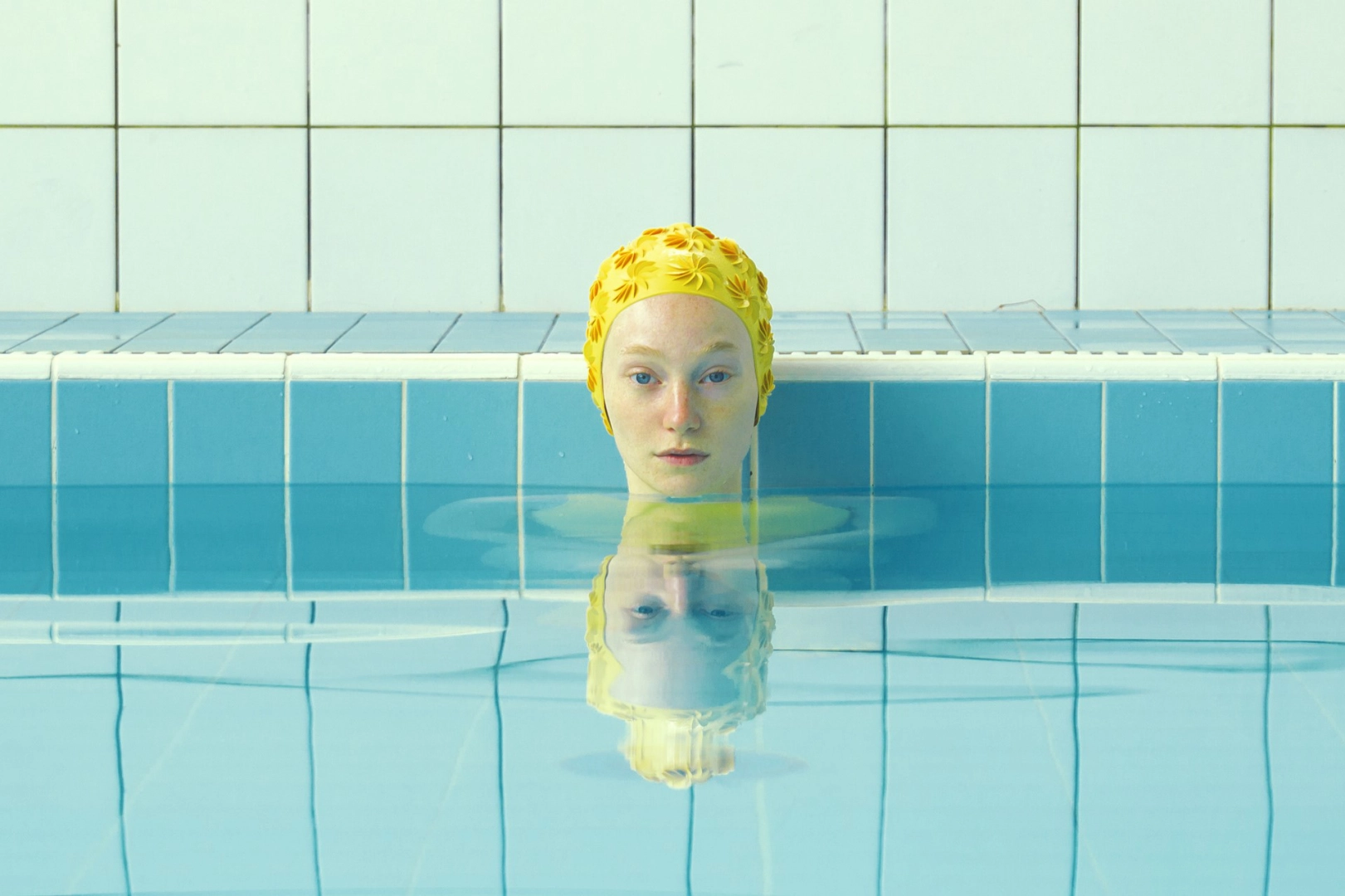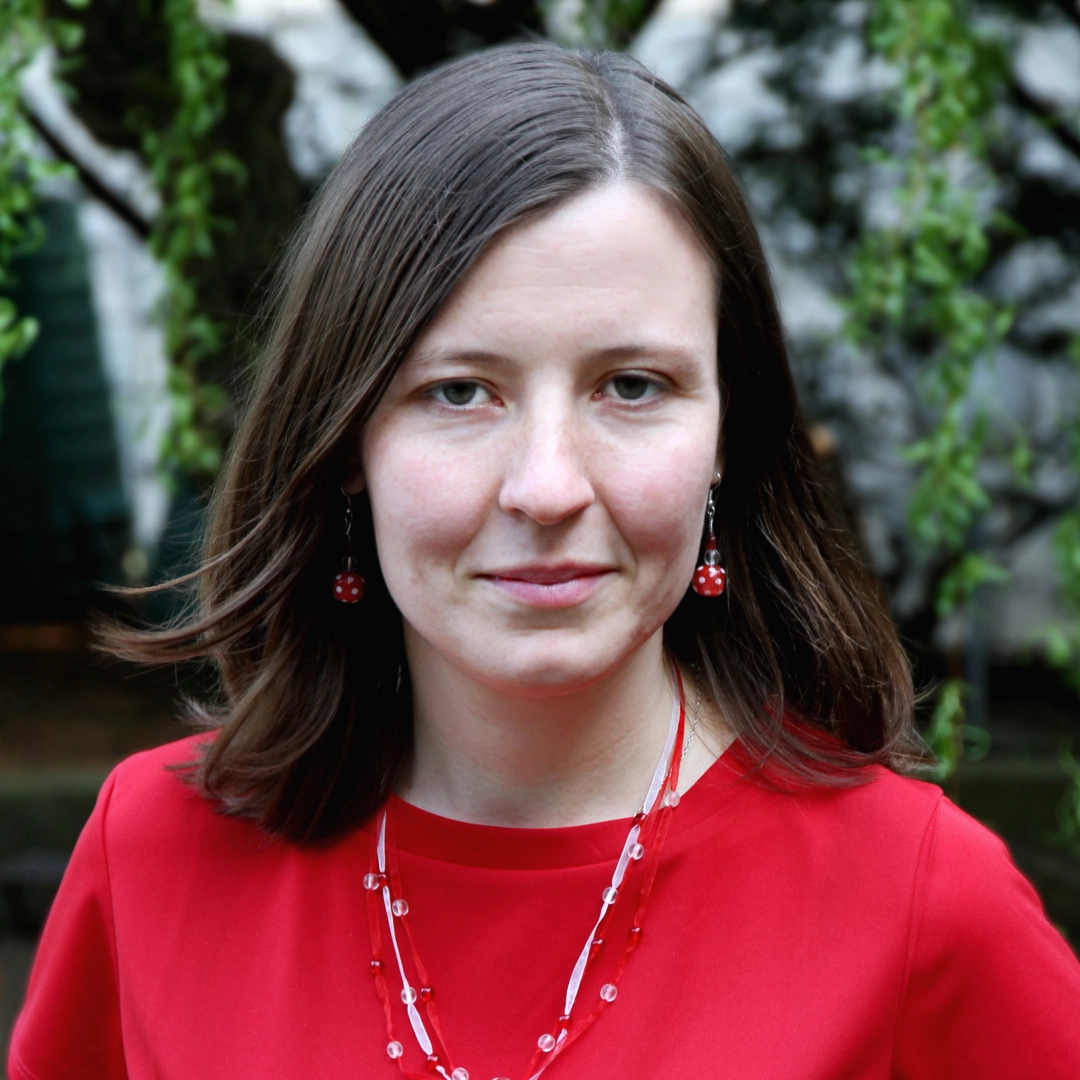The elegant movement of swimmers is an inspiration for painters and sculptors. They often place their sculptures in an actual pool of water or let them float through the air. The environment of swimming pools and public baths also has its place in art, their atmosphere inspiring painters and photographers. An important role is played by the element of water itself, which, with its reflections and blurring of the image, enables a different perception of reality.
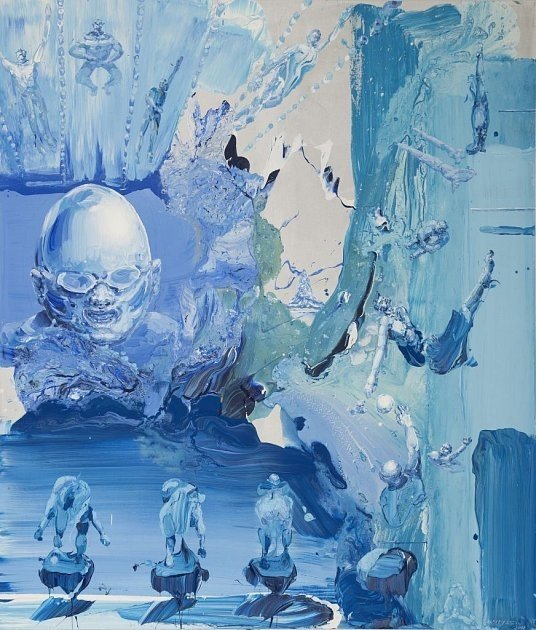
Michael Rittstein is both a painter and a swimmer. These days he paints expressive figural art but as a young man, he also swam competitively. He was an athlete even during his studies at the Academy of Fine Arts, which he represented as a swimmer in the university league and even now he still visits the pool every day. He created an entire series of paintings with the theme of swimming pools and swimmers in the seventies. He also dedicated one part of the Sports Epic series to swimming, which he created in 2012 on the order of the Czech Olympic Committee for the Czech House in London. The series depicts stories about the desire for perfection in art and sport as well as life.
Sculptures swimming in water and air
Swimming also appears in the work of Kurt Gebauer who is of the same generation as Rittstein. Together with other artists in 1987, they founded the collective 12/15 Pozdě, ale přece, which subscribes to the ideas of new figuration and existential figuration of the 70s. The topic of swimmers and swimming is one of Gebauer’s lifelong topics. He began with drawings captured at the pool and since the mid-60s he portrays swimming figures through materials. His sculptures sometimes float in space, and other times they utilise the water’s surface like his sculpture of swimmers’ legs placed in Vojanovy sady in Pilsen.
.jpg)
The sculptor Zdeněk Ruffer also placed sculptures of swimmers into the fountains of the administrative block at Invalidovna in Prague. He used his favoured material, concrete, which he cast into moulds of the bodies of specific people. The characters swim, dive or simply relax in the pools, in one instance even accompanied by a pair of hippos peeking out from the water.
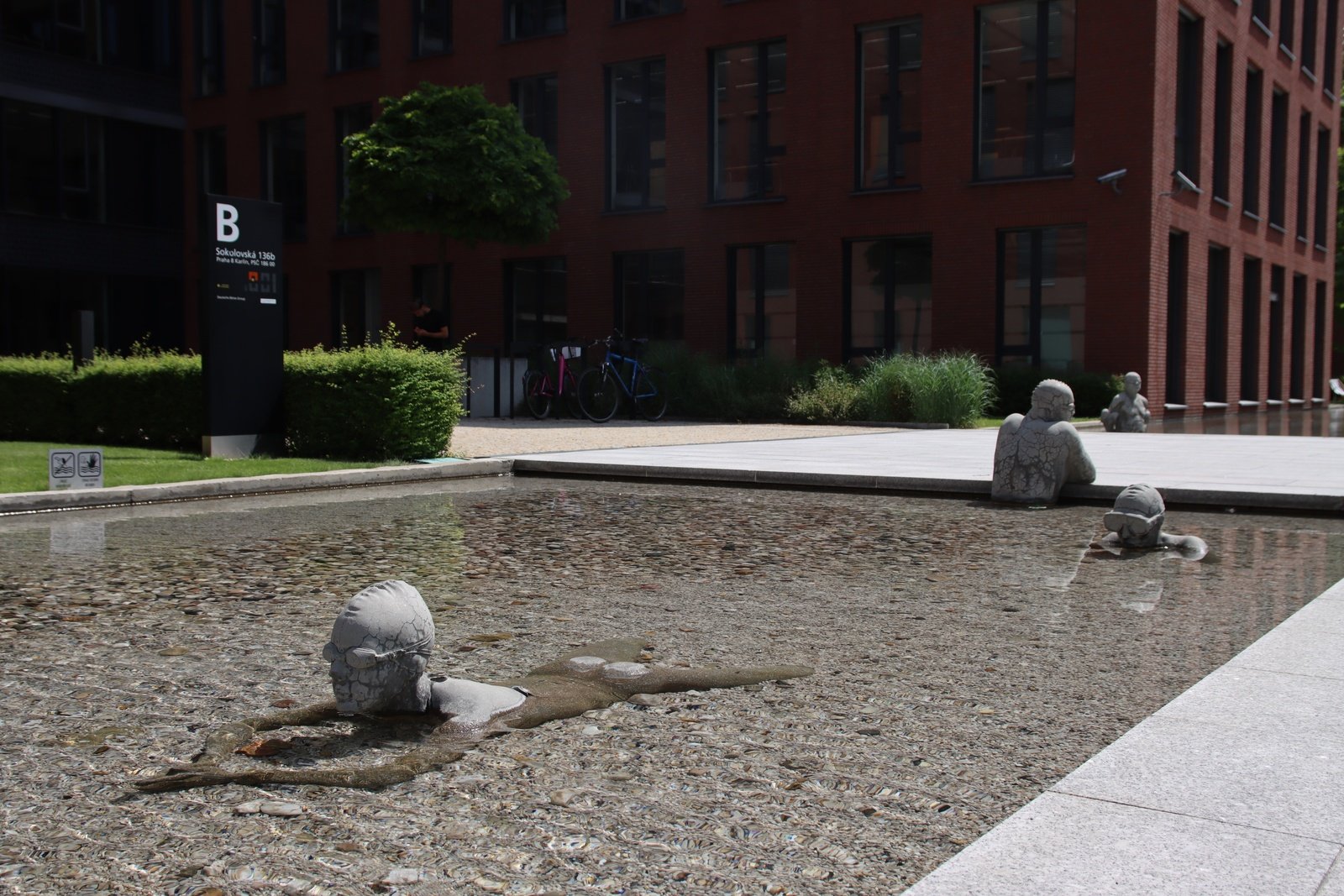
Veronika Psotková’s wire sculptures, on the other hand, float through the air. Among them, we won’t miss synchronised and athletic swimmers. During the period of Covid lockdown, she placed them in one of the cells at Náplavka in Prague and allowed passers-by to see art at least through glass, like looking into an aquarium.
Swimming as a symbol of social issues and the cyclical nature of the world
An extensive series of swimmers was also painted by Brno Faculty of Fine Arts student Lucie Lienerová, who works under the pseudonym Lištica. She uses her own experience as a competitive athlete while simultaneously expressing her feelings about current social events. In the rather dark paintings subjective and broader public experiences intersect.
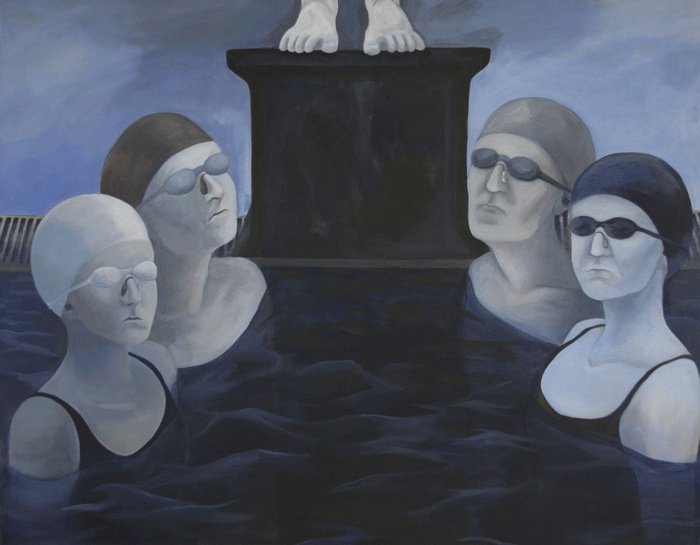
Swimmers have even become part of one of the newest Prague murals at the tram terminal in Hostivař. David Mazanc's extensive mural work entitled Swim! (Plav!) sees a parallel between swimmers turning around at the end of the pool and the tramway terminus where public transport connections constantly arrive and leave, over and over again. The large painting shows swimmers intersecting in the shape of Infinity, pointing to the cycle of life itself.
The atmosphere of the pool as an inspiration for performances, photos and paintings
The performance of the Brno-based INSTITUT INSTITUT called Dead in the pool, which premiered last November, takes place in the swimming pool. The spectators at the bleachers on one side of the pool observe the everyday operation, however, the lifeguard has been replaced by a clown. While he is not doing anything, he is also making both swimmers and spectators uncomfortable with his mere presence. During the five-hour show, the spectators become the ones acting strange, subconsciously imagining that something has to happen.
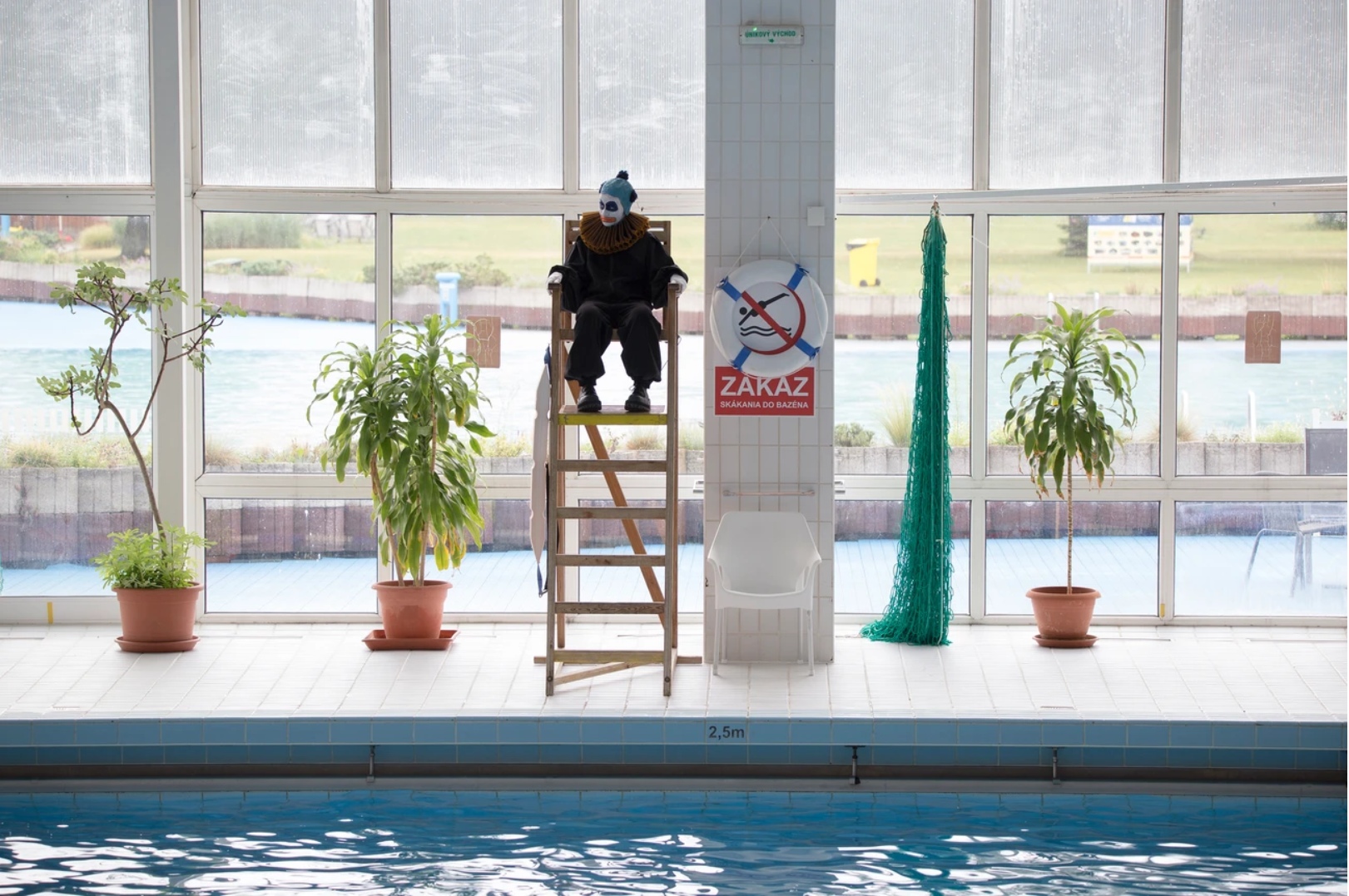
Slovak photographer Mária Švarbová was also inspired by the atmosphere of swimming pools. Over time her art has developed from portraits to working with atmosphere, colour and space. She places composed scenes into the swimming pool environment, and while only containing everyday objects they still manage to achieve a dreamlike atmosphere. Her photographs, linked by visual purity and symmetry, have been published in a book titled Swimming pool in 2017.
.jpg)
The Californian painter T. S. Harris’ central theme is the environment of swimming pools, beaches and swimming itself, which, according to her, connects the past with the present. Elegant colour paintings in the atmosphere of the mid-twentieth century depict women in the water, by the pool or on the beach. The painter is inspired by iconic period photographs and films capturing the mood of old times.
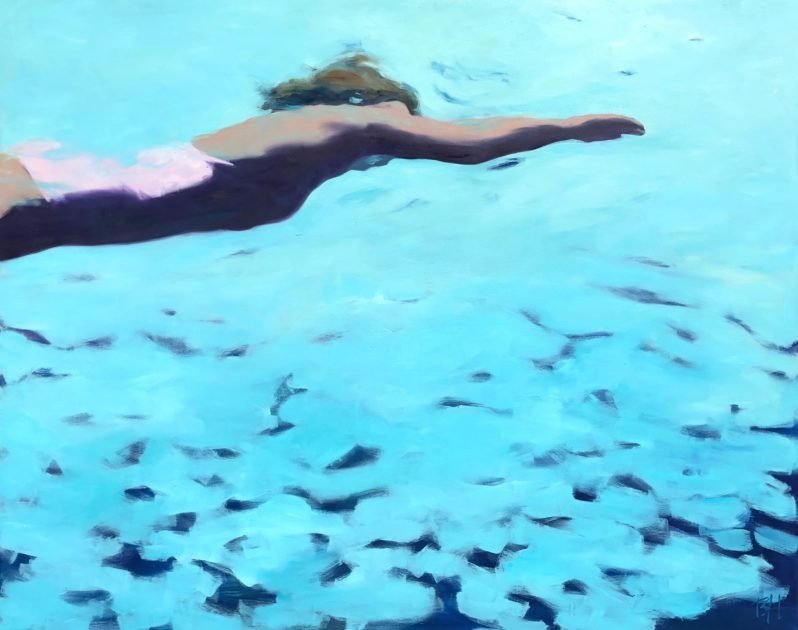
Swimming and dance form a significant part of Ruby Onyinyechi Amanze's inspiration. She captures figures in various positions, mid-movement, often in connection with the empty space of the paper, which in itself is also the object of her investigation.
Installation where the spectators feel like they are in a pool
Giorgia Tucker uses modern technology allowing for the creation of alternate realities to draw attention to important social and ecological phenomena. Her outdoor art installation Fluitō (translated as overflowing or floating on the surface), exhibited this July at the Birmingham Festival, uses visual and sound sensations, projections, video and mirrors. While viewing the work, the viewer actively participates and gets to know the different layers of coexistence with water not only for professional swimmers but also for people who swim just for fun. The interactive form also draws attention to water shortages in certain countries and ocean pollution. Using virtual and augmented reality placed within real public space, where it creates a sort of alternate bubble, she draws attention to the risks posed by climate change.
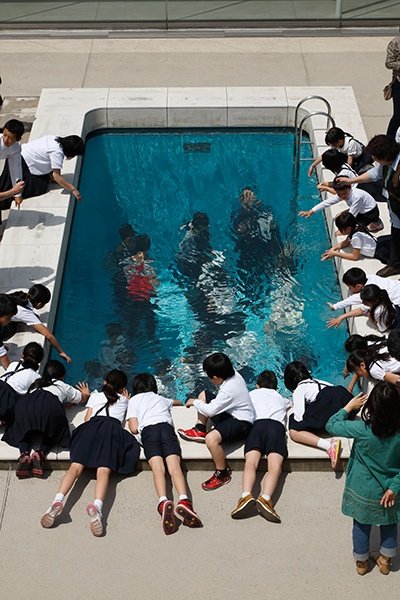
You’ll feel like you’re in a swimming pool inside the installation by Leandro Erlich, an Argentinian conceptual artist making visual paradoxes and optical illusions. The work was first exhibited at New York's MoMA gallery and is now part of the permanent exhibition at the 21st Century Museum of Contemporary Art in Kanazawa, Japan, consisting of a shallow pool with a thick glass bottom and an underwater room that can be entered. It offers a double experience of looking down from above, where the spectator sees other visitors as if underwater, and upwards, where only blurred silhouettes of passers-by can be seen.
Former pools turned into galleries
By the way, former swimming pools can also be used as galleries, as is the case with, for example, La Piscine Museum in Roubaix, France which offers two floors filled with modern art. However, we don’t need to travel abroad. In Liberec, North Bohemia, the city baths have been skillfully converted into a gallery as well. The revitalisation of the baths was carried out by the Sial Studio in Liberec, which received the Architects Union Grand Prix Award for the project in 2013. A mere year later the Liberec Regional Gallery, which shows off the old pool’s spirit, opened its doors to art lovers. One of the first exhibitions carried the title Swimmers and focused on the building’s historical purpose.

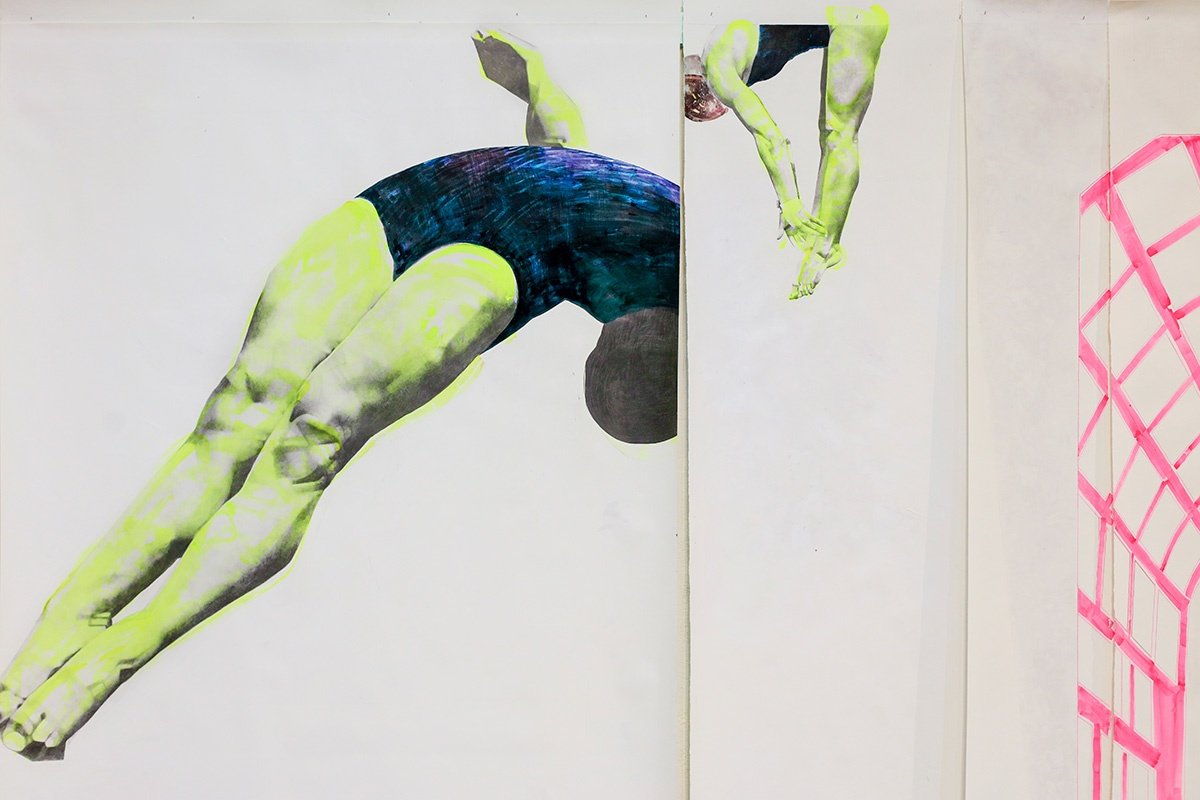
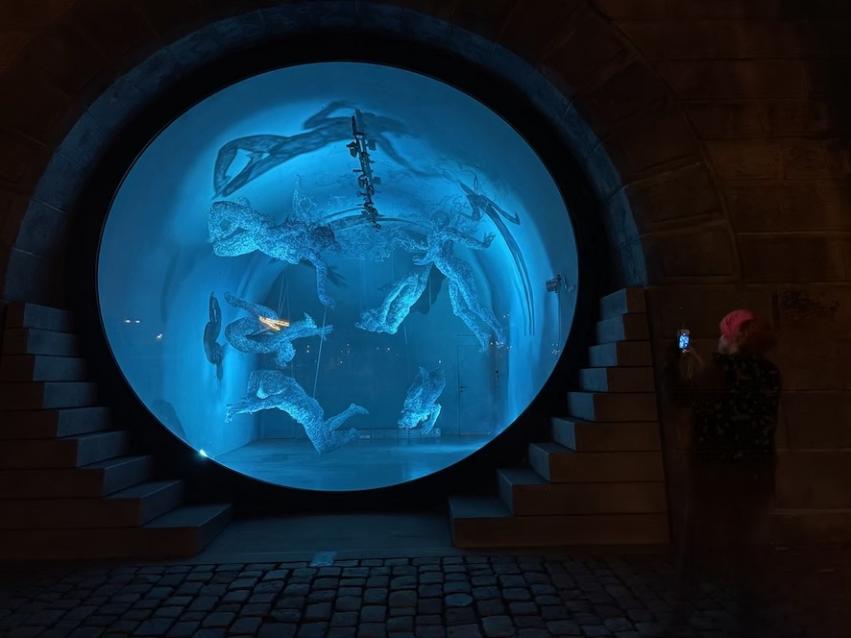
%20(1).jpg)
%20(1).jpg)
